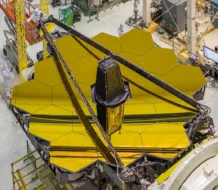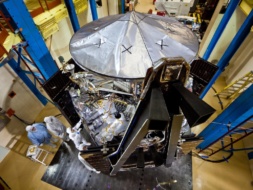The concept that we could beam unlimited, concentrated solar energy from space down to Earth via microwaves has piqued the interest of scientists for decades. Until recently, though, space-based solar power was purely theoretical.
This week, the first demonstration probe to ever successfully beam solar power to Earth from orbit completed its year-long mission. In its year circling the Earth, Caltech’s Space Solar Power Demonstrator (SSPD) notched three major successes: proving the functionality of a spacecraft design to form the basis of a future space power station, testing a compact solar cell for collecting solar energy, and, importantly, transmitting a beam of power from space to a ground station.
“Solar power beamed from space at commercial rates, lighting the globe, is still a future prospect,” Caltech president Thoas Rosenbaum said in a release. “But this critical mission demonstrated that it should be an achievable future.”
The demonstrator: The demonstrator launched aboard a Vigoride space tug built by in-space transportation company Momentus on Jan. 3, 2023. It came loaded with three central experiments:
- DOLCE (Deployable on-Orbit ultraLight Composite Experiment), which is the building block for a planned kilometer-scale constellation of solar-energy-collecting satellites
- Alba (which doesn’t stand for anything), which tested the functionality of a new type of solar cell designed for use in space applications
- MAPLE (Microwave Array for Power-transfer Low-orbit Experiment), which was responsible for actually sending the power on home
The experiments were each successful, and gave the research team back at Caltech valuable data to go back and iterate on each technology. The MAPLE instrument, for example, has already received some modifications to keep the next generation from degrading over time.
A bright future: The successful completion of the SSPD mission bodes well for the future of space-based solar, but a future where energy from satellites powers the grid on Earth is still a very long way off. The technology is still-new and very expensive, and its viability as a commercial prospect is still in question.
Still, there are options on their way. Japan is taking the lead on building a space “solar farm” as soon as next year, and Caltech has follow-up missions planned to continue demonstrating the capability on a larger scale.




